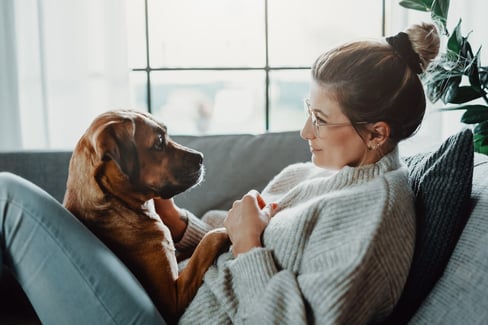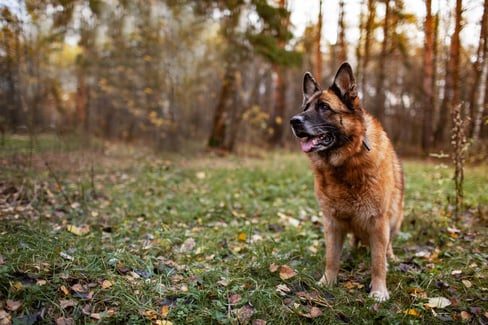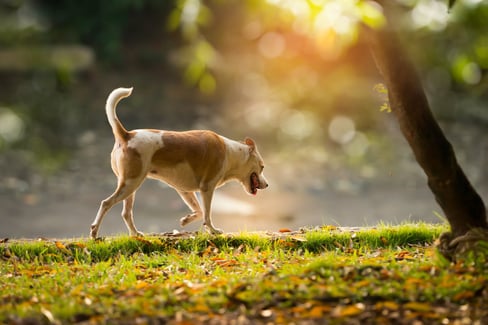Table of Contents
Picture this: you’re quietly relaxing at night with your dog in the room when you suddenly hear a weird snorting sound. It may sound like your dog is choking or experiencing an asthma attack.
Thankfully, your pooch may not be experiencing any of these conditions. Instead, the strange snorting sound is likely a result of something called reverse sneezing.
Research shows that a dog reverse sneeze is common, especially in smaller breeds. If you notice your pup showing signs of this behavior, you might be wondering what is going on with your pet and how you can help him out.
This article explores everything you need to know about reverse sneezing in dogs, including the causes, symptoms, and whether or not this is a serious dog health condition. Plus, we’ll look at how to treat and avoid this condition if your pup starts struggling with it!
What Is a Reverse Sneeze in a Dog?
Reverse sneezing is the layman term for paroxysmal respiration. Because a dog sucks air when this occurs rather than blowing it out, reverse sneezing is literally the opposite of a normal sneeze.
Reverse sneezing is a respiratory condition common in dogs, mainly caused by inflammation or irritation of:
- Sinus passages
- Nasal
- Pharyngeal
Reverse sneezing is a common way for dogs to remove dust, allergens, powder, and other foreign particles that disturb their upper respiratory airways. Overly-excited canines can also frequently experience reverse sneezing.
There are no underlying conditions that could predispose reverse sneezing. Most canines are entirely healthy and normal before an episode of dog reverse sneeze occurs. It’s fairly easy to identify a dog reverse sneeze; when your dog experiences rapid, repeated, and sudden inhalations through their nose, that’s reverse sneezing.
A dog reverse sneeze occurs as a spasm in the back of the throat dog muscle. Because of the spasm, the animal’s windpipe narrows, causing your canine to inhale quickly for thirty seconds through his nose. This leads to snorting or choking noises. Dogs also typically extend their necks when reverse sneezing occurs.
We know it can be scary or shocking to see your pet experience this respiratory condition. But as long as you know how to address it, your dog should be fine.
Diagnosing reverse sneezing involves a thorough check-up to learn more about the dog’s clinical signs and medical history.
The vet should first rule out other more serious conditions that can cause snorting and abnormal breathing. These conditions include:
- Nasal tumors
- Collapsing trachea
- Upper respiratory tract infection
- Foreign bodies present in the mouth or nasal passages
It’s also best for your vet to perform other diagnostic tests, including allergy tests, radiographs, and blood tests, to arrive at a more definitive diagnosis and rule out other diseases that may have the same symptoms.
Causes of Reverse Sneeze in Dogs
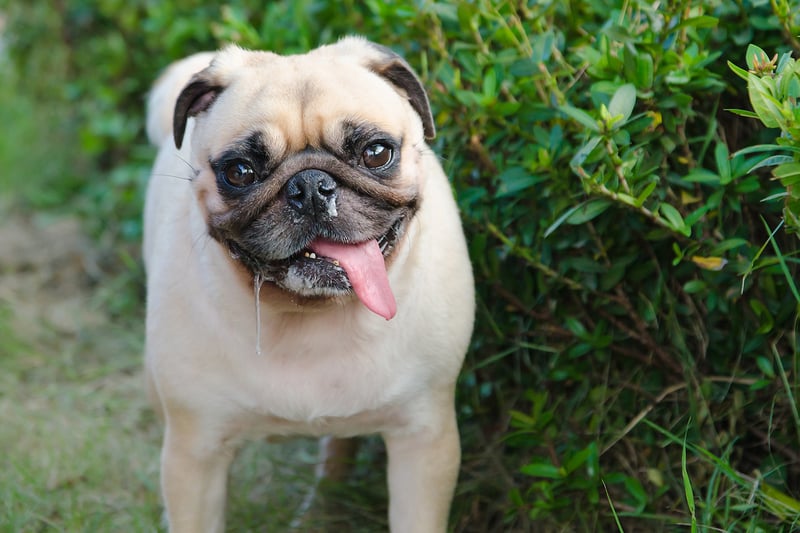
There are no scientific causes of dog reverse sneeze. But even though it’s not fully understood, most veterinarians think a reverse sneeze in dogs is caused by anything that irritates the backs of the dog’s throat. The most common irritations are caused by the following:
- Overexcitement
- Air fresheners, incense, or scented candles
- Dust
- Allergies
- Excessive mucus
- Food or beverage
- Prolonged soft palate
- Canines with narrow nasal passages
- Nasal mites
The breed of the dog can matter too. Short-headed breeds, also known as brachycephalic, are more prone to experiencing reverse sneezing:
- Pekingese
- Pugs
- French Bulldogs
- Bulldogs
- Shih Tzus
Although the physiology of these types of dogs may mean they reverse sneeze more often, any age, breed, or sex of dog can be affected. In addition to the above, if your dog is overweight, they may experience more sneezing. This could be because extra fatty deposits around the neck area can cause difficulty breathing.
Is Reverse Dog Sneeze Serious?
Reverse sneezing may sound scary and alarming, but it’s nothing serious compared to other respiratory illnesses in dogs. And more often than not, animals recover fast after a single episode. Plus, you don’t need to worry about your canines feeling additional harmful effects after.
Reverse sneezing can only become alarming when you notice that it’s constantly happening to your dog, which can indicate difficulty breathing.
Symptoms of reverse dog sneeze that indicate a vet visit is needed includes:
- Nose bleeding
- Frequent coughing and sneezing
- Nose discharge
- Scratching and irritation
- Constantly shaking their heads
- Open-mouthed and labored breathing
- Blue and pale gums
- Panting even when the dog is inactive
- Frequent wheezing
- Signs of lethargy and weakness
If you notice any of these issues affecting your pup’s overall health, it might be time to pay a visit to the vet.
What Does a Reverse Sneeze in a Dog Look Like
Because reverse sneezing occurs by rapidly pulling the air in instead of moving it out, you can observe your pet becoming stiff and craning its neck. Dogs in the middle of a reverse sneeze are also likely to gasp and wheeze to let you know they are distressed.
The good news is that these episodes are pretty short. In fact, reverse sneezing usually only lasts for about 30-60 seconds.
Dogs also typically hold pretty still during the episodes. They may stretch their neck out to relieve some of the discomfort until the episode passes.
Afterwards, you’ll notice that your dog typically gets right back to romping around as usual. There are not any lingering negative effects that you need to worry about.
What Does a Reverse Sneeze in a Dog Sound Like?
If you haven’t heard a dog reverse sneeze before and aren’t sure what to look for, we can help. As you’ve probably already guessed from the name, a dog reverse sneeze sounds sort of like, well, a sneeze.
During these episodes, dogs make a sort of snorting and coughing sound. They may also breathe in rapidly, which can sound as though they’ve got something stuck in their throat.
In some dogs, reverse sneezes can be pretty loud. In these cases, your dog may sound sort of like goose-honking. Despite the loud noise, your pooch is probably fine, and the episode will be over shortly.
How Long Do Episodes of a Reverse Sneeze on a Dog Last?
As mentioned above, reverse sneezing doesn’t usually last very long at all. Sometimes, these episodes are over in just a few seconds. Other times, these episodes can last for up to a minute.
If you notice that the episode is lasting longer than this, there might be a bigger issue at hand. In that case, you’ll want to get your pooch to a vet so that you can have him checked out and make sure nothing else is going on.
The table below breaks down a few bigger concerns that are sometimes mistaken for a reverse sneeze.
|
Condition |
Explanation |
Symptoms |
|
Asthma |
A chronic disease that causes irritation to your dog’s lungs |
|
|
Collapsed trachea |
A respiratory condition that leads to the tracheal rings in your dog’s throat collapsing |
|
|
Upper respiratory infection |
An infection of your dog’s respiratory tract, similar to infections like bronchitis in humans |
|
|
Brachycephalic syndrome |
Difficulty breathing in dogs with short snouts due to shortened airways |
|
|
Heart disease |
Heart disease can cause fluid buildup in your dog’s lungs, which can cause symptoms similar to reverse sneezing |
|
How to Treat a Reverse Sneeze in a Dog?
In most cases, a reverse dog sneeze doesn’t need any kind of treatment. These sneezes aren’t harmful, and they pass pretty quickly.
That said, you can still help your dog out if you notice that he’s struggling with reverse sneezing:
- Hold your dog’s nostrils closed for a moment. You can also try lightly massaging or petting your dog’s throat. This can help calm him down and ease any anxiety associated with the phenomenon.
- Another way to help treat a dog reverse sneeze is to blow lightly on your dog’s face. This will force him to swallow a few times, which can stop the throat spasms, causing the reverse sneeze.
- Finally, you can always take your dog outdoors. The fresh air paired with calming verbal cues to your dog can help relax his muscles and ease the symptoms of the reverse sneeze.
Although this condition doesn’t usually warrant any kind of actual medical treatment, there’s no harm in seeing your vet just in case. Vets can offer more at-home remedies and suggestions to help you treat reverse sneezing and keep your dog happy and healthy.
Besides that, if you’ve got a case of chronic or allergy-related reverse sneezing on your hands, some vets may recommend a couple of additional treatments to help your dog feel better. These include:
- Antihistamines
- Removing perfumes from your dog’s environment
- Changing what carpet cleaners you use in the home
How Vets Diagnose Reverse Sneezing
If you’ve decided that your pup is pretty uncomfortable and it’s time to head to the vet, there are a couple of things your vet will do to see what’s going on and rule out any other nasty conditions that could be to blame.
Firstly, your vet will go through a history of any potential allergies, irritants, or seasonal activities that could be causing your dog to reverse sneeze. He or she will also make sure that your dog hasn’t ingested any foreign objects that could be causing obstructions.
From there, the vet will move on to a physical exam. During the exam, they’ll check for things like nasal discharge, difficulty breathing, and issues with the heart and lungs. Your vet will also likely conduct blood tests to check out your dog’s blood count and chemistry, and they may recommend a urinalysis.
Although this sounds intense, it’s the best way for the vet to make sure there isn’t something more sinister going on than just a simple reverse sneeze.
How to Prevent Dog With Reverse Sneeze?
If you’re worried that your dog might develop reverse sneezes further down the road, there are a couple of things you can do to prevent them.
For one, it’s best to get rid of any irritating household products or cleaners that could exacerbate your dog’s symptoms. If you already know of allergies your dog has to these products, getting rid of them can help prevent reverse sneezes (and other unwanted issues).
You can also try giving your pup antihistamines. Antihistamines can help your dog stop sneezing and can prevent pesky symptoms associated with seasonal allergies.
Finally, if you just want to support good health in your dog overall, it pays to treat your pup to dog supplements. Supplements serve as preventative care for dogs and can be a great way to support a healthy immune system.
Remember, when choosing pet supplements, you want to look for key ingredients such as:
- Glucosamine for dogs
- Chondroitin
- Omega-3 fatty acids
- MSM
- Probiotics
- Phytonutrients
- Taurine
These ingredients help keep every aspect of your dog’s health on track so that they can avoid issues like reverse sneezing!
Summary
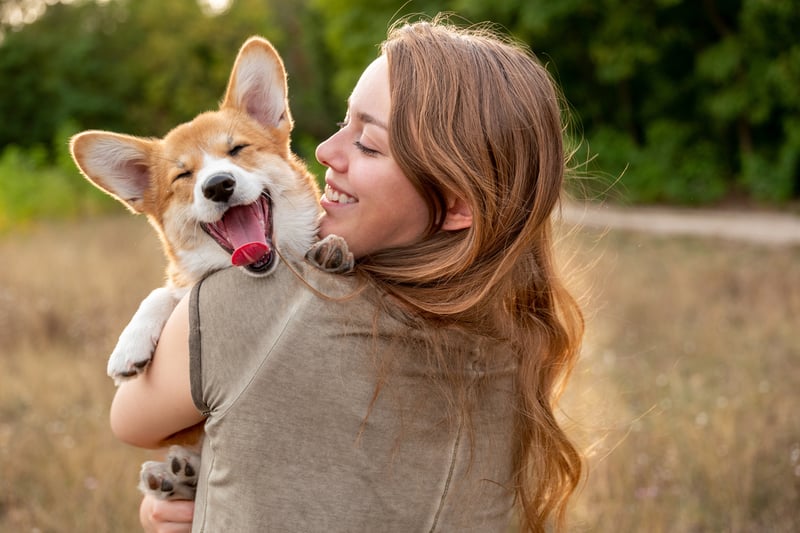
Dog reverse sneezing, or paroxysmal respiration, isn’t serious, although it can be alarming if you’re not used to it. Basically, it occurs when dogs rapidly pull air in through their noses, making a coughing or choking sound.
These episodes are usually quick, lasting only a few seconds. Although they’re rarely harmful if you notice your dog displaying other poor health symptoms, taking him to the vet is always the best bet. He or she will be able to get your dog back on track and feeling his best!
Besides going to the vet when your pup isn’t feeling so well, one way to help keep your dog in tip-top shape is through preventative supplements. One great supplement is TRI-ACTA, a joint health supplement that supports dog mobility and keeps your dog romping around.
Contact us to learn more about these supplements and how they can help your pooch!
TRI-ACTA for Pets
A proactive approach for developing and younger adult pets to maintain optimal joint health mobility, minimize inflammation and fend off age-related ailments.
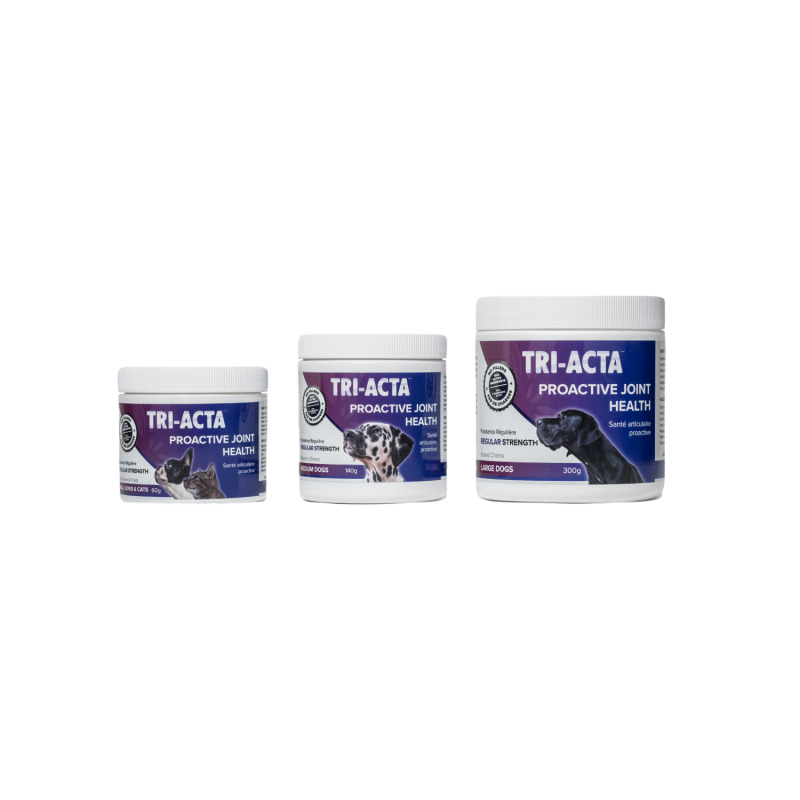
Newsletter Signup
Subscribe to our newsletter to receive the latest news and exclusive offers.
.jpg?height=2000&name=Cliick_Integricare-DISPLAY-REVISEDV2%20(1).jpg)
Proactive & Therapeutic Joint Supplements
When given daily, Integricare joint supplements recover bone and joint injuries faster and help prevent mobility injuries from happening in the first place.








